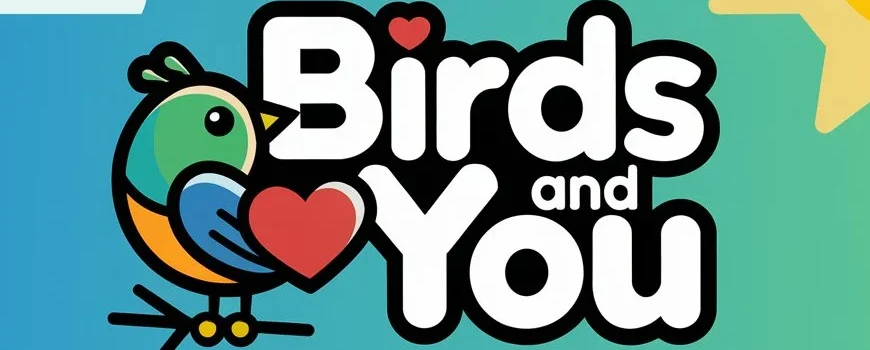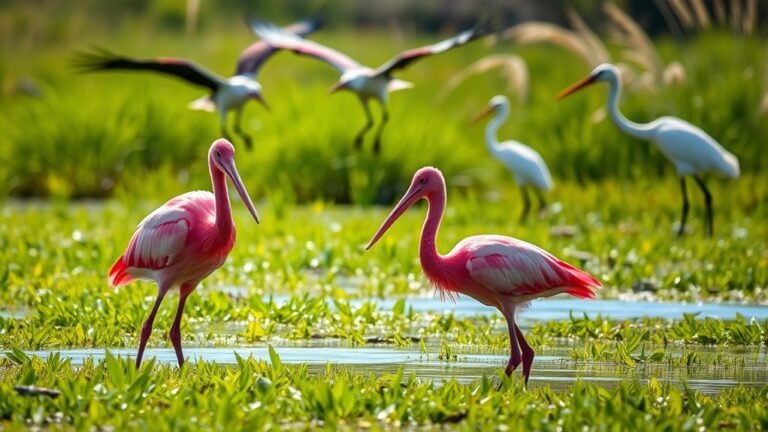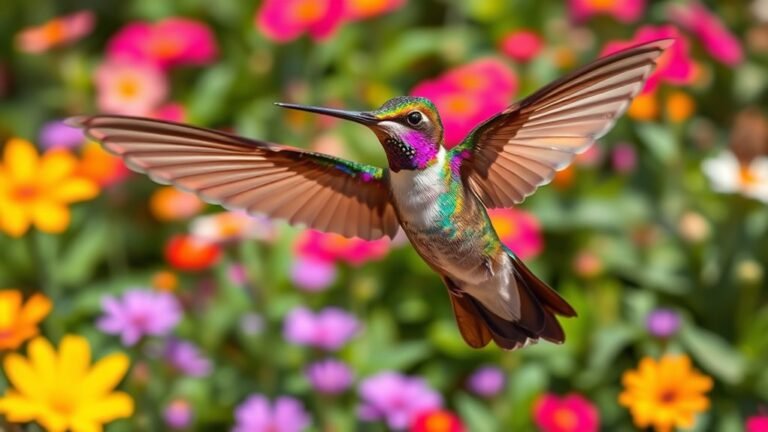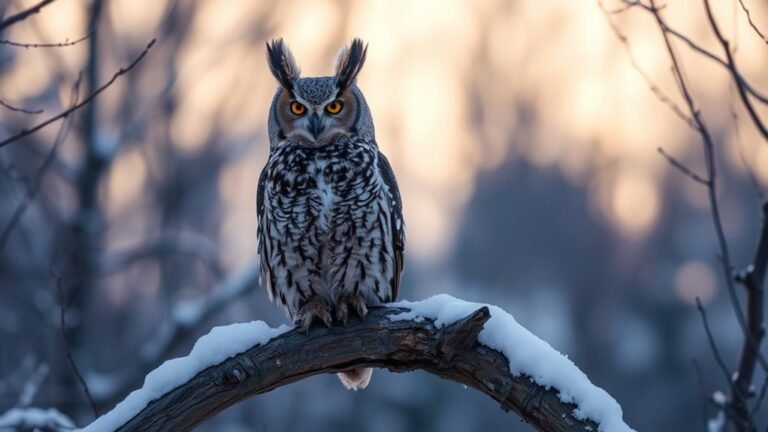Dove Vs Pigeon: Understanding the Differences
Doves and pigeons are often mixed up, but they are different birds. Let's take a closer look at what makes them unique.
First, size is one way to tell them apart. Doves are usually smaller and have a more delicate look. Pigeons are bigger and sturdier. Next, the way they behave can also help. Doves often have a softer, gentle way of flying, while pigeons are more active and can flap around quickly.
Both birds play important roles in nature. They help spread seeds and can clean up waste. In human life, doves are symbols of peace, while pigeons are popular in cities.
By learning these differences, you can appreciate both doves and pigeons more. So, next time you see one, you'll know what makes it special! What new things will you notice about them?
A Quick Overview
Doves and pigeons may look similar, but they have some key differences.
First, let's talk about size. Doves are usually smaller and skinnier. Pigeons are bigger and chunkier.
Next, the colors of their feathers set them apart. Doves have soft, smooth colors, like light gray or white. Pigeons often have bright colors and shiny patches on their necks.
When they fly, doves glide gracefully with their long tails. Pigeons flap their wings strongly and have shorter tails.
Doves are known for their strong love. They often stay with one partner for life. Pigeons are more flexible; they might change partners based on their social groups.
Both birds face threats in their environments. Urban areas can shrink their habitats. Climate change, illegal hunting, and pollution also put them at risk.
In short, while doves and pigeons have some similarities, their size, colors, flight styles, and social behaviors make them unique.
The Columbidae Family: An Overview

The Columbidae family includes doves and pigeons. These birds are interesting and social. They live in many different places and have strong connections with each other.
Doves and pigeons form close pairs. This shows how much they like to be together. Their history tells us how they changed over time from their ancestors to the birds we recognize today.
When you watch them, you can learn a lot. They often stay in groups when they rest and eat. This teamwork helps them survive and thrive in nature.
Physical Characteristics: Doves vs. Pigeons

Doves and pigeons are both part of the same bird family, but they look a bit different.
Doves are usually smaller and skinnier, while pigeons are bigger and chunkier.
If you look at their feathers, doves often have soft colors that look smooth.
Pigeons, on the other hand, have more colorful feathers with shiny patches on their necks.
When they fly, doves have long tails and move gracefully.
Pigeons have shorter tails and flap their wings more strongly.
Common Species: A Closer Look

Getting to know the differences in doves and pigeons is fun and interesting. These birds each have special features that make them unique.
Here are four common types you should learn about:
- Mourning Dove: This bird makes a soft cooing sound and has a long, pointed tail.
- Rock Pigeon: You can spot these in cities because they've shiny neck feathers.
- Eurasian Collared-Dove: This dove has a black "collar" on its neck that stands out.
- White-winged Dove: Look for this dove's bright white wing patches. It often lives in deserts.
Each of these birds has special traits that help them survive in their homes. Learning about them can help you appreciate these amazing creatures even more!
Behavior and Social Structure
When you watch doves and pigeons, you'll see different behaviors and social rules. Doves like to form strong pair bonds and usually mate for life. This shows how special their mating is.
Pigeons are different. They've more flexible ways of finding partners, which makes their relationships varied.
Social order is important too. Doves often have a clear and stable ranking in their groups, which helps them stay together.
On the other hand, pigeons have a ranking that can change based on the environment and how they interact with each other.
Habitat Preferences: Where They Live
Doves and pigeons live in many different places. Each bird likes certain spots that fit their needs. Here's where you can usually find them:
- Cities: Pigeons love busy cities. They often make homes on ledges and rooftops of buildings.
- Forests: Doves prefer woodlands and bushes. They like the thick plants that give them cover.
- Fields: Some dove types enjoy open fields. They can find food there and feel safe.
- Nesting: Both birds look for safe places to build their nests. Pigeons often use buildings, while doves tend to choose shrubs or trees.
Knowing where these birds like to live helps you see how they fit into our lives and environments.
It's fun to look for them in their favorite spots!
Diet and Feeding Habits
Doves and pigeons are related, but they eat different foods. Doves usually like seeds from grass and plants. They prefer softer seeds.
Pigeons, on the other hand, eat a bigger variety of food. They enjoy larger seeds and grains.
When looking for food, doves often search on the ground. They're quick and can easily pick out seeds.
Pigeons have more ways of finding food. They sometimes search in trees or bushes.
In cities, doves may also eat more fruits and vegetables. This helps them fit into their surroundings.
Knowing these differences can help us appreciate how important doves and pigeons are in our environment.
Communication: Vocalizations and Body Language
Doves and pigeons talk to each other in interesting ways. They use sounds and how they move to share messages. If you watch them closely, you can learn a lot about these birds.
Here are some key things to notice:
- Sounds They Make: Doves make a soft cooing sound. Pigeons make sharper noises.
- How They Stand: Doves often look calm and graceful. Pigeons puff up to show they're in charge.
- Moving Their Heads: Doves bob their heads gently. This can mean they're curious or showing they aren't a threat.
- Flapping Wings: Pigeons flap their wings when they want to attract a mate.
Pay attention to these signals to better understand what doves and pigeons are saying!
Cultural Significance and Symbolism
Doves and pigeons are important birds in many cultures around the world. They both have different meanings and symbols in various traditions.
Doves often stand for peace, love, and purity. You can see doves in many religious texts and artworks. People like to release doves at weddings and peace events to show hope and calmness.
Pigeons, on the other hand, are usually seen in cities and represent being flexible and smart. They don't have the magical charm of doves, but they show how to survive in tough situations.
Understanding these differences helps you see how these birds connect to your community and the world around you.
Conservation Status and Threats
Doves are known for symbolizing peace, but their safety is at risk. Many things hurt their numbers, and it's important for us to know these issues. Here are some key problems doves face:
- Loss of Homes: Building cities and farming take away the places where doves live.
- Climate Change: Changes in weather can affect where doves migrate and how easily they find food.
- Hunting and Captivity: Some doves are hunted illegally, while others are kept as pets, which can harm their populations.
- Pollution: Chemicals in the environment can make doves sick and affect their ability to breed.
People are working hard to help doves, but we all need to pitch in to make sure these lovely birds continue to thrive.
Your support and awareness can help protect their future.
The Role of Doves and Pigeons in Ecosystems
Doves and pigeons are important for our environment. They help spread seeds when they eat fruits and seeds. This spreading helps new plants grow. When these birds eat, they often drop seeds in new places, which helps make our world more diverse and lively.
Although they aren't as famous as bees and butterflies for pollination, doves and pigeons also help some plants by moving pollen around. You can find them in cities and rural areas, and their presence helps keep nature in balance.
Understanding what these birds do can help you feel more connected to nature. Every animal, big or small, plays a role in keeping our environment healthy.
Frequently Asked Questions
Are Doves and Pigeons the Same Species?
Are Doves and Pigeons the Same?
Doves and pigeons might look similar, but they are not the same. They belong to the same family called Columbidae. However, there are differences in species.
Doves are usually smaller and have a lighter build. They often have a gentle appearance and coo softly. You might see them in parks or backyards.
Pigeons, on the other hand, are often seen in cities. They are generally bigger and can come in many colors. They can be noisy, too!
Can Doves and Pigeons Interbreed?
Yes, doves and pigeons can breed together. This means they can make baby birds that are a mix of both. But sometimes, these baby birds might have a hard time living and fitting in with other birds. This is because their behaviors can be different, which makes it tricky for them to find food or make friends in their environment.
How Long Do Doves and Pigeons Typically Live?
Doves and pigeons usually live between 3 to 15 years. How long they live can change based on where they live. In cities, they face more dangers like cars and predators, which can make their lives shorter. In natural settings, they are safer and often live longer. So, if you see a dove or pigeon in the park, it might have a better chance of a long life than one in the city.
What Are Common Misconceptions About Doves and Pigeons?
Many people think doves only mean peace. They often overlook how smart and adaptable pigeons are. You might see pigeons as annoying, but if you watch them closely, you'll see they have interesting behaviors. There's so much more to these birds than meets the eye!
How Do Doves and Pigeons Attract Mates?
Doves and pigeons find their mates using fun dances and special sounds. They make soft cooing noises and show off with smooth moves. This helps them connect and show they want to be together for a long time. Watching their courtship is like seeing a cute little show just for love!

Luna is the passionate founder and author of Birds and You, a website dedicated to sharing her love for birds with fellow enthusiasts. Through her engaging articles and guides, she aims to educate and inspire others to explore the fascinating world of birds. When she’s not writing, you can find Luna observing birds in their natural habitats or sharing beautiful bird photography on Pinterest. Join her on this journey to celebrate and protect our feathered friends!







